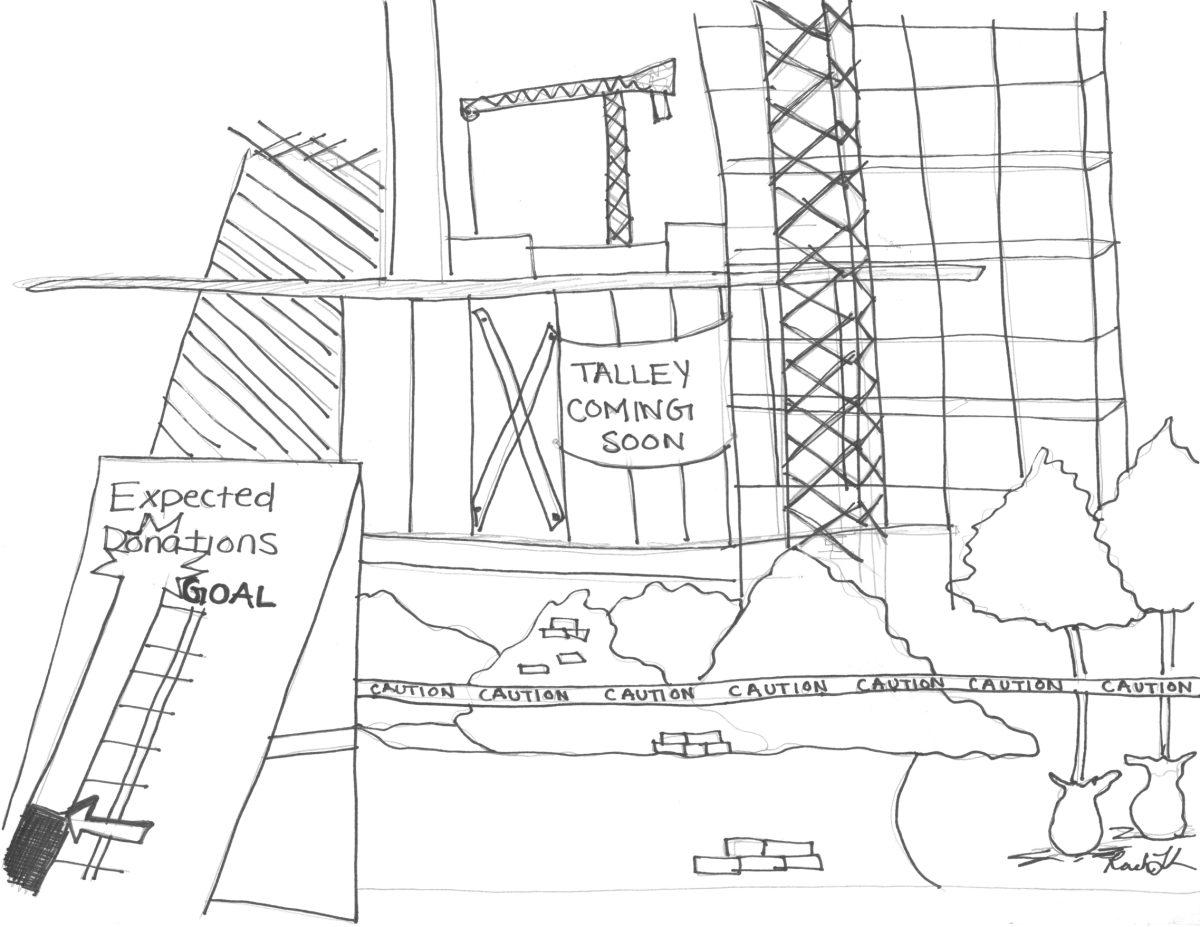The Facts: The secondary funding source for the Talley renovation project is private donations; however, those have yet to be received.
Our Opinion: The project coordinators should not spend money they don’t have in the hope they’ll achieve their goal of gaining private donations, because there’s no certainty the goal will be reached.
While there are plans in place to begin soliciting private donations for the much-anticipated Talley Student Center renovation project, it is beginning to look like the $120 million tab will be picked up mainly by student fee dollars instead of a balance between fees and private donations.
In the original plan for financial support, the project was supposed to be funded by student fees, but also private donations; however, none have shown up as of yet. While the University Student Centers Board of Directors plans to focus on pitching the project to corporations and alumni to produce these funds, what is the incentive for these donors?
Alumni relations have always been strained at N.C . State. We have the Alumni Association to build relationships between alumni and the school; however, in comparison to our brothers in blue, our alumni support falls to the wayside.
Aside from the alumni reach-out, these projects also attempt to garner financial support from sponsoring corporations. However, such corporate sponsorships are not only difficult to acquire, but even harder to maintain. This is also because of the lack of benefit for the individual corporations.
Because of this, the budget for Talley and other campus projects should not rely on these types of donations. The Talley project’s secondary funding is the support of benefactors, but with the lack of those donations, the burden falls on the current students.
As Jonathon Smith, President of University Student Centers Board of Directors, said, the project could not be funded without student fees. This is even truer now, without the anticipated donations. This is exactly why these donations should not be expected of alumni. These types of funds should be used to finance projects around campus that the University, or the state, cannot afford to invest in.
But with the cost of tuition and living increasing, the last thing we as students can afford is a rise in fees. The increase of student fees for the Talley project was supposed to be carried out over 10 years, now the projection is 22 years to completely fund the project. This type of spending is exactly what got our state into the debt mess we’re in now, and we as a University should not be aiming to do the same thing with our construction project.
This can be avoided by taking the alumni and corporate donations out of the equation, and to not even consider these funds that we do not have a part of a building project’s budget. If we receive them, then it can subsidize the cost of the project, rather than the current method of raising the other methods of gathering the financial means. These budgets should use the money they have, not plan for more than they receive.








